#boris vasilev
Explore tagged Tumblr posts
Video
vimeo
Porter Robinson - Cheerleader from Hugh Mulhern on Vimeo.
PRODUCTION Production Company: Riff Raff Director: Hugh Mulhern EP/Producer: Precious Mahaga EP: Natalie Arnett Director's Representation: Hands Executive Producer: Porter Robinson Executive Producer: Slush Management (Aaron Greene, Neal O'Connor, Amar Pathak, Samuel Luria, Valerie Maybaum, Ryan Glatt) Creative Director: Pablo Jones Soler
BTS/DIGITAL Paul Mauer
SERVICE COMPANY Solent Film MD: Alex Momchev Solent Film MP: Magdalena Staneva Solent Film Service Producer: Tihomira Temelkova Assistant Producer: Elena Doroshenko Production Manager: Mitko Milushev Production Coordinator: Teodora Naydenova Production Assistants: Eva Taneva, Simona Atanasova, Serafima Deyanova, Dimitar Borisov
CASTING DIRECTOR Veselina Georgieva
AD'S 1st AD: Antony Tanev 2nd AD: Margarita Aneva 3rd AD: Damyan Tanev
CAMERA DOP: Nikita Popkov 1st AC: Vladislav Mateev 2nd AC A camera: Ivaylo Yovchev 2nd AC B camera: Luciano Ivanov Video Control: Borislav Stoyanov Drone Operator: Nikolay Georgiev - Tanera Data Manager: Delyan Kaloyanov
LIGHTING Gaffer: Alexander Trenev Electricians: Vasil Vasilev, Georgi Tsanev, Dimitar Yanev, Boris Vasilev Dimmer Board Operator: Philip Georgiev
GRIP Key Grip: Tsvetan Kostov Grips: Albert Nikolinski, Dimitar Dimitrov, Yulian Gotchev, Mihail Gotsov, Emil Ivelinov Head Technician: Borislav Tanev Crane Technician: Stanimir Vatsov
SOUND Playback: Kostadin Separevski
ART Production Designer: Elena Isolini Production Designer Assistant: Theresa Bates Art Directors: Momchil Tasev, Aleksandar Yanev Construction Manager: Minko Krustev Props Master: Ada Paunova On-Set Dressers: Nedelcho Hazarbasanov, Yavor Milanov Set Dressers: Kostadin Dervenski, Evtim Evtimov
LOCATION Location Manager: Anita Miletieva Assistants: Elena Karadusheva, Lidiya Aleksandrova
STUNTS Stunt Coordinator: Ivan Vodenicharov Stunt Dept. Coordinator: Aneta Ivanova Stunts: Marina Yordanova, Desislava Slavova, Tea Markova, Mariela Kostadinova, Ventsislav Hristov
CHOREOGRAPHY Kosta Karakashyan
SFX Supervisor: Nikolay Fartunkov Senior Technician: Ivan Kazakov Technicians: Vladimir Mitov, Blagoslav Zhenkov
HAIR/MAKE-UP Hair Cut & Color: Miyuki Goto Artist's Hair & Make-up Artist: Yesol Choi Artist's Hair & Make-up Artist Assistant: Gohun Kim Head of Make Up: Gergana Batanova Head of Hair: Veselka Tsekina Hair Stylists: Bilyana Borisova, Gergana Ivanova, Nataliya Kamenova, Gratziela Dimitrova
COSTUME Artist's Stylist: Luca Wowczyna Luca's Assistant: Elliott Lane Assistant Stylists: Maria Petrova, Teodora Marinova, Nadya Dobrikova, Yoana Kusheva, Emiliyan Bonev Tailor: Marieta Duncheva Mask Design: Audrey Mai
ORGANIZATION Set Manager: Georgi Asenov PAs: Lyubomir Tabakov, Ivaylo Tabakov, Vulcho Monkov
STOP MOTION: THE JUNKS Stop Motion Supervisor: Zlatin Radev Animator: Boris Wolf Assistant Animator / Puppet Doctor: Diliana Valcheva Rigger / Assistant Animator: Teodor Ralev Set Dressers: Alex Suninski, Marin Nalbantov
EDITING: TRIM EDITING Editor: Joseph Taylor Edit Assistant: Anders Mills Producer: Noreen Khan
POST PRODUCTION VFX Supervisor: Vasil Galabov VFX: The Mill EP: Saskia Delius Producer: Sam Ashby 2D Lead: Ben Gallagher 2D Assists: Henry Claud N’guetta, Jane Williams, Muhaddissa Hasham Associate Producer: Rushikesh Shelar Production Coordinator: Karishma Verma Compositor Supervisor: Nanda P V Compositor Lead: Ragesh Ramachandran Rotoscoping Supervisor: Kunal Bendke Prep Lead: Jalander Madishetty GABHA Studios: Dafydd Upsdell, Daniel Morris Grade: Andrew Francis Add’l Post Production: Andrzej, Nina Muro, Nick Lane CGI: Alex (chippy) Futtersak, Dom Harwood VFX Artists: David Ochoa
TRANSPORT Coordinator: Vladimir Mashinata Blagoev Prod Vans: Svetoslav Yordanov, Ivo Radkov, Iliya Iliev, Georgi Evstatiev
CATERING Cherry Craft & Catering Manager: Mariela Manolova Cherry Craft & Catering: Petya Kovacheva, Ivan Nalbatski, Borislav Parvanov
SUNWEAVER CREATIVE Shawn Chapman: Producer - Creative Jacqueline Adorni: Producer Garrett Robles: 3D / Previs Lauren Sperling: Project Coordinator Matthew Hunt: Production Assistant
WARDROBE / COSTUME: VENIA Christine Ko: Key Costumer Keeter Ly: Key Costumer
WARDROBE / COSTUME: SUNWEAVER Cybal Hall: Costume Supervisor Annabelle Gerke: Key Costumer Christopher Hall: Costumer (Silkscreening) Daniel Rose: Lead Wig Designer Kieran Smith: Wig Stylist Samantha Michael: Wig Stylist
ART DEPARTMENT Kigarumi Sensei Taiki Nishikawa: Key Artist Paul Nishikawa: Artist
Creative Character Engineering Andrew Clement: Lead Artist Lesley Becerra: Head of Production Brad Palmer: Sr. Project Manager Cory Fisher: 3D print/fabrication Alex Dill: Fabrication Mike Ross: Fabrication
Special Thanks - Venia
1 note
·
View note
Photo

Bulgarian Arts
Through Centuries and Communist Rule
Ancient Treasures
The oldest Bulgarian art traces back to 12th-century mural paintings in Bachkovo Monastery. Between the 12th and 14th centuries, small cross-shaped churches with domes emerged. While Byzantine and Oriental influences shaped early art, western European influence gained prominence, especially in the painting center of Tirnovo. Contemporary artists like Anton Mitov, Ivan Angelov, Andrei Nikolov, and Ivan Lazarov continue the rich artistic tradition.
The Stage and Melodies
The National Opera (1890) and National Theater (1907) contributed to Bulgaria’s theatrical and musical heritage. Renowned singers such as Luba Velich, Boris Christov, and Elena Nikolai achieved global acclaim. Notable composers like A. Bukureshtliev, Dobri Christov, Pancho Vladigerov, and Petko Stainov enriched the musical landscape Private Istanbul Tour.
Cultural Landscape Under Communism
Communist influence since 1947 significantly impacted Bulgarian literature and art. The Communist Party’s control extended to all cultural and educational entities, enforcing adherence to party dictates. Literary classics contrary to Communist policies were banned, and censorship stifled creativity.
Resistance emerged, notably from non-Communist writer Trifon Kunev, who faced imprisonment and death in 1954. Communist Party member and painter Alexander Zhendov protested censorship in 1950, leading to his tragic suicide in 1951. Further dissent unfolded after the Soviet Communist Party’s 20th Congress in 1957, challenging the “cult of personality.” Playwright Todor Guenov’s “Fear” stood out, joined by other dissenting voices like Pavel Vezhinov, Orlin Vasilev, Emil Manov, Liudmil Stoyanov, and critic Boris Delchev.
Despite resistance, Bulgarian culture under Communist rule became a satellite of Soviet ideology, losing its originality. Subject to Party dogma, it served Soviet imperialistic and ideological goals, leaving an indelible mark on the nation’s cultural identity.
0 notes
Photo

Hinge presents an anthology of love stories almost never told. Read more on https://no-ordinary-love.co
553 notes
·
View notes
Photo
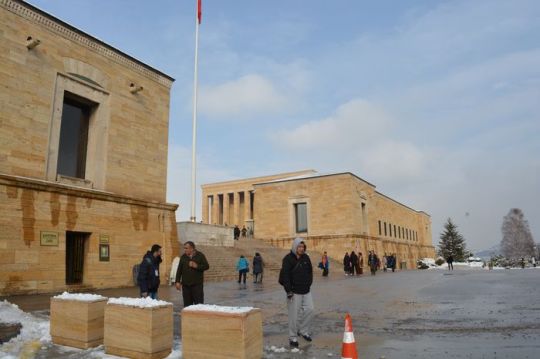
Bulgarian Arts
Through Centuries and Communist Rule
Ancient Treasures
The oldest Bulgarian art traces back to 12th-century mural paintings in Bachkovo Monastery. Between the 12th and 14th centuries, small cross-shaped churches with domes emerged. While Byzantine and Oriental influences shaped early art, western European influence gained prominence, especially in the painting center of Tirnovo. Contemporary artists like Anton Mitov, Ivan Angelov, Andrei Nikolov, and Ivan Lazarov continue the rich artistic tradition.
The Stage and Melodies
The National Opera (1890) and National Theater (1907) contributed to Bulgaria’s theatrical and musical heritage. Renowned singers such as Luba Velich, Boris Christov, and Elena Nikolai achieved global acclaim. Notable composers like A. Bukureshtliev, Dobri Christov, Pancho Vladigerov, and Petko Stainov enriched the musical landscape Private Istanbul Tour.
Cultural Landscape Under Communism
Communist influence since 1947 significantly impacted Bulgarian literature and art. The Communist Party’s control extended to all cultural and educational entities, enforcing adherence to party dictates. Literary classics contrary to Communist policies were banned, and censorship stifled creativity.
Resistance emerged, notably from non-Communist writer Trifon Kunev, who faced imprisonment and death in 1954. Communist Party member and painter Alexander Zhendov protested censorship in 1950, leading to his tragic suicide in 1951. Further dissent unfolded after the Soviet Communist Party’s 20th Congress in 1957, challenging the “cult of personality.” Playwright Todor Guenov’s “Fear” stood out, joined by other dissenting voices like Pavel Vezhinov, Orlin Vasilev, Emil Manov, Liudmil Stoyanov, and critic Boris Delchev.
Despite resistance, Bulgarian culture under Communist rule became a satellite of Soviet ideology, losing its originality. Subject to Party dogma, it served Soviet imperialistic and ideological goals, leaving an indelible mark on the nation’s cultural identity.
0 notes
Photo

Bulgarian Arts
Through Centuries and Communist Rule
Ancient Treasures
The oldest Bulgarian art traces back to 12th-century mural paintings in Bachkovo Monastery. Between the 12th and 14th centuries, small cross-shaped churches with domes emerged. While Byzantine and Oriental influences shaped early art, western European influence gained prominence, especially in the painting center of Tirnovo. Contemporary artists like Anton Mitov, Ivan Angelov, Andrei Nikolov, and Ivan Lazarov continue the rich artistic tradition.
The Stage and Melodies
The National Opera (1890) and National Theater (1907) contributed to Bulgaria’s theatrical and musical heritage. Renowned singers such as Luba Velich, Boris Christov, and Elena Nikolai achieved global acclaim. Notable composers like A. Bukureshtliev, Dobri Christov, Pancho Vladigerov, and Petko Stainov enriched the musical landscape Private Istanbul Tour.
Cultural Landscape Under Communism
Communist influence since 1947 significantly impacted Bulgarian literature and art. The Communist Party’s control extended to all cultural and educational entities, enforcing adherence to party dictates. Literary classics contrary to Communist policies were banned, and censorship stifled creativity.
Resistance emerged, notably from non-Communist writer Trifon Kunev, who faced imprisonment and death in 1954. Communist Party member and painter Alexander Zhendov protested censorship in 1950, leading to his tragic suicide in 1951. Further dissent unfolded after the Soviet Communist Party’s 20th Congress in 1957, challenging the “cult of personality.” Playwright Todor Guenov’s “Fear” stood out, joined by other dissenting voices like Pavel Vezhinov, Orlin Vasilev, Emil Manov, Liudmil Stoyanov, and critic Boris Delchev.
Despite resistance, Bulgarian culture under Communist rule became a satellite of Soviet ideology, losing its originality. Subject to Party dogma, it served Soviet imperialistic and ideological goals, leaving an indelible mark on the nation’s cultural identity.
0 notes
Photo

Bulgarian Arts
Through Centuries and Communist Rule
Ancient Treasures
The oldest Bulgarian art traces back to 12th-century mural paintings in Bachkovo Monastery. Between the 12th and 14th centuries, small cross-shaped churches with domes emerged. While Byzantine and Oriental influences shaped early art, western European influence gained prominence, especially in the painting center of Tirnovo. Contemporary artists like Anton Mitov, Ivan Angelov, Andrei Nikolov, and Ivan Lazarov continue the rich artistic tradition.
The Stage and Melodies
The National Opera (1890) and National Theater (1907) contributed to Bulgaria’s theatrical and musical heritage. Renowned singers such as Luba Velich, Boris Christov, and Elena Nikolai achieved global acclaim. Notable composers like A. Bukureshtliev, Dobri Christov, Pancho Vladigerov, and Petko Stainov enriched the musical landscape Private Istanbul Tour.
Cultural Landscape Under Communism
Communist influence since 1947 significantly impacted Bulgarian literature and art. The Communist Party’s control extended to all cultural and educational entities, enforcing adherence to party dictates. Literary classics contrary to Communist policies were banned, and censorship stifled creativity.
Resistance emerged, notably from non-Communist writer Trifon Kunev, who faced imprisonment and death in 1954. Communist Party member and painter Alexander Zhendov protested censorship in 1950, leading to his tragic suicide in 1951. Further dissent unfolded after the Soviet Communist Party’s 20th Congress in 1957, challenging the “cult of personality.” Playwright Todor Guenov’s “Fear” stood out, joined by other dissenting voices like Pavel Vezhinov, Orlin Vasilev, Emil Manov, Liudmil Stoyanov, and critic Boris Delchev.
Despite resistance, Bulgarian culture under Communist rule became a satellite of Soviet ideology, losing its originality. Subject to Party dogma, it served Soviet imperialistic and ideological goals, leaving an indelible mark on the nation’s cultural identity.
0 notes
Photo
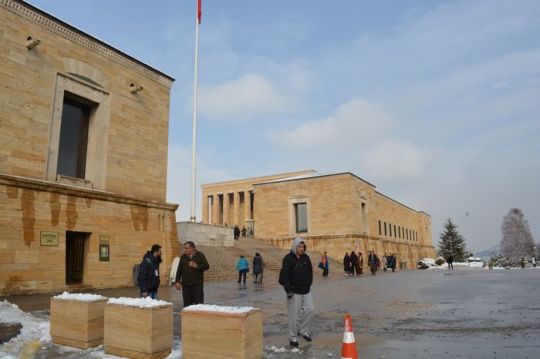
Bulgarian Arts
Through Centuries and Communist Rule
Ancient Treasures
The oldest Bulgarian art traces back to 12th-century mural paintings in Bachkovo Monastery. Between the 12th and 14th centuries, small cross-shaped churches with domes emerged. While Byzantine and Oriental influences shaped early art, western European influence gained prominence, especially in the painting center of Tirnovo. Contemporary artists like Anton Mitov, Ivan Angelov, Andrei Nikolov, and Ivan Lazarov continue the rich artistic tradition.
The Stage and Melodies
The National Opera (1890) and National Theater (1907) contributed to Bulgaria’s theatrical and musical heritage. Renowned singers such as Luba Velich, Boris Christov, and Elena Nikolai achieved global acclaim. Notable composers like A. Bukureshtliev, Dobri Christov, Pancho Vladigerov, and Petko Stainov enriched the musical landscape Private Istanbul Tour.
Cultural Landscape Under Communism
Communist influence since 1947 significantly impacted Bulgarian literature and art. The Communist Party’s control extended to all cultural and educational entities, enforcing adherence to party dictates. Literary classics contrary to Communist policies were banned, and censorship stifled creativity.
Resistance emerged, notably from non-Communist writer Trifon Kunev, who faced imprisonment and death in 1954. Communist Party member and painter Alexander Zhendov protested censorship in 1950, leading to his tragic suicide in 1951. Further dissent unfolded after the Soviet Communist Party’s 20th Congress in 1957, challenging the “cult of personality.” Playwright Todor Guenov’s “Fear” stood out, joined by other dissenting voices like Pavel Vezhinov, Orlin Vasilev, Emil Manov, Liudmil Stoyanov, and critic Boris Delchev.
Despite resistance, Bulgarian culture under Communist rule became a satellite of Soviet ideology, losing its originality. Subject to Party dogma, it served Soviet imperialistic and ideological goals, leaving an indelible mark on the nation’s cultural identity.
0 notes
Photo

Hinge presents an anthology of love stories almost never told. Read more on https://no-ordinary-love.co
322 notes
·
View notes
Photo
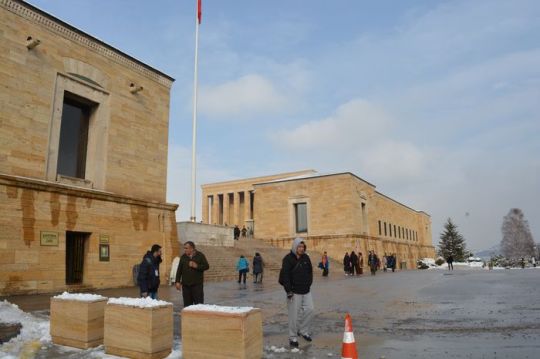
Bulgarian Arts
Through Centuries and Communist Rule
Ancient Treasures
The oldest Bulgarian art traces back to 12th-century mural paintings in Bachkovo Monastery. Between the 12th and 14th centuries, small cross-shaped churches with domes emerged. While Byzantine and Oriental influences shaped early art, western European influence gained prominence, especially in the painting center of Tirnovo. Contemporary artists like Anton Mitov, Ivan Angelov, Andrei Nikolov, and Ivan Lazarov continue the rich artistic tradition.
The Stage and Melodies
The National Opera (1890) and National Theater (1907) contributed to Bulgaria’s theatrical and musical heritage. Renowned singers such as Luba Velich, Boris Christov, and Elena Nikolai achieved global acclaim. Notable composers like A. Bukureshtliev, Dobri Christov, Pancho Vladigerov, and Petko Stainov enriched the musical landscape Private Istanbul Tour.
Cultural Landscape Under Communism
Communist influence since 1947 significantly impacted Bulgarian literature and art. The Communist Party’s control extended to all cultural and educational entities, enforcing adherence to party dictates. Literary classics contrary to Communist policies were banned, and censorship stifled creativity.
Resistance emerged, notably from non-Communist writer Trifon Kunev, who faced imprisonment and death in 1954. Communist Party member and painter Alexander Zhendov protested censorship in 1950, leading to his tragic suicide in 1951. Further dissent unfolded after the Soviet Communist Party’s 20th Congress in 1957, challenging the “cult of personality.” Playwright Todor Guenov’s “Fear” stood out, joined by other dissenting voices like Pavel Vezhinov, Orlin Vasilev, Emil Manov, Liudmil Stoyanov, and critic Boris Delchev.
Despite resistance, Bulgarian culture under Communist rule became a satellite of Soviet ideology, losing its originality. Subject to Party dogma, it served Soviet imperialistic and ideological goals, leaving an indelible mark on the nation’s cultural identity.
0 notes
Photo
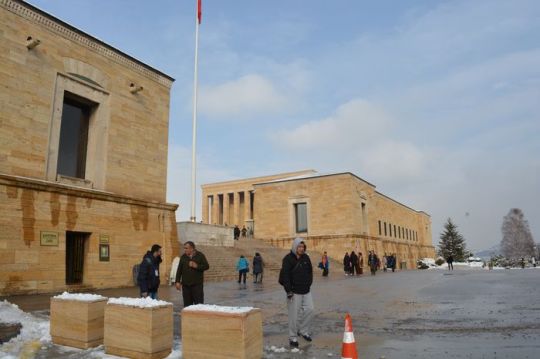
Bulgarian Arts
Through Centuries and Communist Rule
Ancient Treasures
The oldest Bulgarian art traces back to 12th-century mural paintings in Bachkovo Monastery. Between the 12th and 14th centuries, small cross-shaped churches with domes emerged. While Byzantine and Oriental influences shaped early art, western European influence gained prominence, especially in the painting center of Tirnovo. Contemporary artists like Anton Mitov, Ivan Angelov, Andrei Nikolov, and Ivan Lazarov continue the rich artistic tradition.
The Stage and Melodies
The National Opera (1890) and National Theater (1907) contributed to Bulgaria’s theatrical and musical heritage. Renowned singers such as Luba Velich, Boris Christov, and Elena Nikolai achieved global acclaim. Notable composers like A. Bukureshtliev, Dobri Christov, Pancho Vladigerov, and Petko Stainov enriched the musical landscape Private Istanbul Tour.
Cultural Landscape Under Communism
Communist influence since 1947 significantly impacted Bulgarian literature and art. The Communist Party’s control extended to all cultural and educational entities, enforcing adherence to party dictates. Literary classics contrary to Communist policies were banned, and censorship stifled creativity.
Resistance emerged, notably from non-Communist writer Trifon Kunev, who faced imprisonment and death in 1954. Communist Party member and painter Alexander Zhendov protested censorship in 1950, leading to his tragic suicide in 1951. Further dissent unfolded after the Soviet Communist Party’s 20th Congress in 1957, challenging the “cult of personality.” Playwright Todor Guenov’s “Fear” stood out, joined by other dissenting voices like Pavel Vezhinov, Orlin Vasilev, Emil Manov, Liudmil Stoyanov, and critic Boris Delchev.
Despite resistance, Bulgarian culture under Communist rule became a satellite of Soviet ideology, losing its originality. Subject to Party dogma, it served Soviet imperialistic and ideological goals, leaving an indelible mark on the nation’s cultural identity.
0 notes
Photo
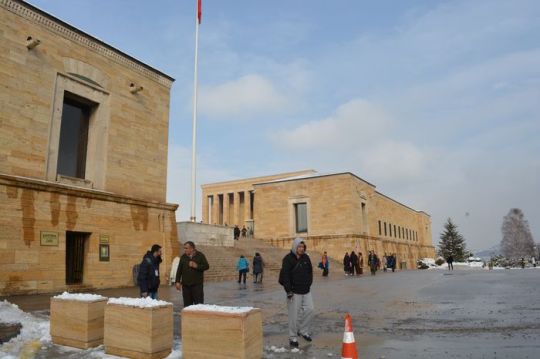
Bulgarian Arts
Through Centuries and Communist Rule
Ancient Treasures
The oldest Bulgarian art traces back to 12th-century mural paintings in Bachkovo Monastery. Between the 12th and 14th centuries, small cross-shaped churches with domes emerged. While Byzantine and Oriental influences shaped early art, western European influence gained prominence, especially in the painting center of Tirnovo. Contemporary artists like Anton Mitov, Ivan Angelov, Andrei Nikolov, and Ivan Lazarov continue the rich artistic tradition.
The Stage and Melodies
The National Opera (1890) and National Theater (1907) contributed to Bulgaria’s theatrical and musical heritage. Renowned singers such as Luba Velich, Boris Christov, and Elena Nikolai achieved global acclaim. Notable composers like A. Bukureshtliev, Dobri Christov, Pancho Vladigerov, and Petko Stainov enriched the musical landscape Private Istanbul Tour.
Cultural Landscape Under Communism
Communist influence since 1947 significantly impacted Bulgarian literature and art. The Communist Party’s control extended to all cultural and educational entities, enforcing adherence to party dictates. Literary classics contrary to Communist policies were banned, and censorship stifled creativity.
Resistance emerged, notably from non-Communist writer Trifon Kunev, who faced imprisonment and death in 1954. Communist Party member and painter Alexander Zhendov protested censorship in 1950, leading to his tragic suicide in 1951. Further dissent unfolded after the Soviet Communist Party’s 20th Congress in 1957, challenging the “cult of personality.” Playwright Todor Guenov’s “Fear” stood out, joined by other dissenting voices like Pavel Vezhinov, Orlin Vasilev, Emil Manov, Liudmil Stoyanov, and critic Boris Delchev.
Despite resistance, Bulgarian culture under Communist rule became a satellite of Soviet ideology, losing its originality. Subject to Party dogma, it served Soviet imperialistic and ideological goals, leaving an indelible mark on the nation’s cultural identity.
0 notes
Photo
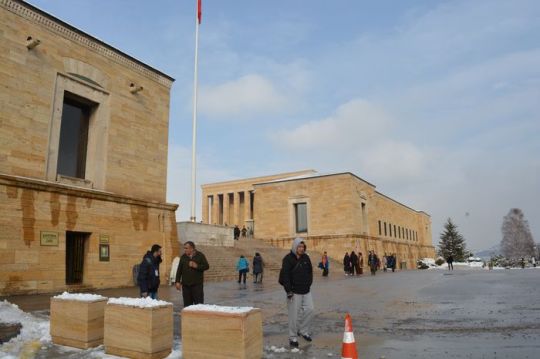
Bulgarian Arts
Through Centuries and Communist Rule
Ancient Treasures
The oldest Bulgarian art traces back to 12th-century mural paintings in Bachkovo Monastery. Between the 12th and 14th centuries, small cross-shaped churches with domes emerged. While Byzantine and Oriental influences shaped early art, western European influence gained prominence, especially in the painting center of Tirnovo. Contemporary artists like Anton Mitov, Ivan Angelov, Andrei Nikolov, and Ivan Lazarov continue the rich artistic tradition.
The Stage and Melodies
The National Opera (1890) and National Theater (1907) contributed to Bulgaria’s theatrical and musical heritage. Renowned singers such as Luba Velich, Boris Christov, and Elena Nikolai achieved global acclaim. Notable composers like A. Bukureshtliev, Dobri Christov, Pancho Vladigerov, and Petko Stainov enriched the musical landscape Private Istanbul Tour.
Cultural Landscape Under Communism
Communist influence since 1947 significantly impacted Bulgarian literature and art. The Communist Party’s control extended to all cultural and educational entities, enforcing adherence to party dictates. Literary classics contrary to Communist policies were banned, and censorship stifled creativity.
Resistance emerged, notably from non-Communist writer Trifon Kunev, who faced imprisonment and death in 1954. Communist Party member and painter Alexander Zhendov protested censorship in 1950, leading to his tragic suicide in 1951. Further dissent unfolded after the Soviet Communist Party’s 20th Congress in 1957, challenging the “cult of personality.” Playwright Todor Guenov’s “Fear” stood out, joined by other dissenting voices like Pavel Vezhinov, Orlin Vasilev, Emil Manov, Liudmil Stoyanov, and critic Boris Delchev.
Despite resistance, Bulgarian culture under Communist rule became a satellite of Soviet ideology, losing its originality. Subject to Party dogma, it served Soviet imperialistic and ideological goals, leaving an indelible mark on the nation’s cultural identity.
0 notes
Photo

Hinge presents an anthology of love stories almost never told. Read more on https://no-ordinary-love.co
492 notes
·
View notes
Photo
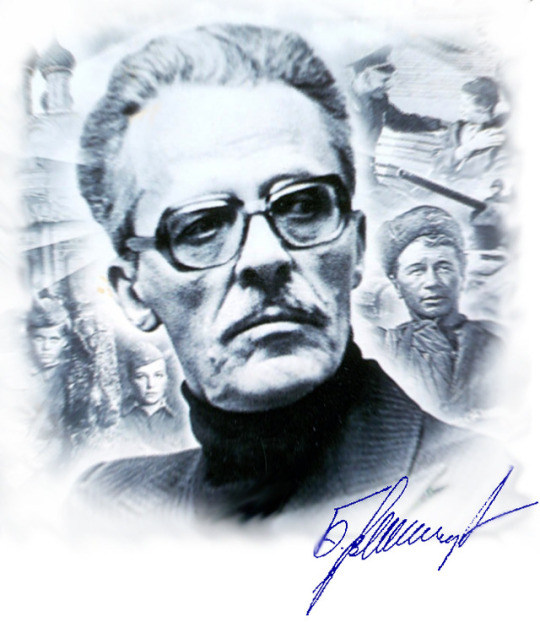
21 мая - 95 лет со дня рождения Бориса Львовича Васильева (1924-2013), русского советского писателя и сценариста Лауреата Государственной премии СССР и Премии Президента Российской Федерации.
Родился в Смоленске в интеллигентной семье. Его отец Лев Александрович Васильев — кадровый офицер Царской, а впоследствии Красной армии, мама Елена Николаевна Алексеева была из старинного дворянского рода, связанного с именами Пушкина и Толстого, с общественным движением народников.
Мальчик увлекался историей и литературой, и эти два предмета «с детства переплелись в его сознании». Позже семья штатного военного переехала из Смоленска в Воронеж, где Борис и учился. В школе мальчик играл в любительских сп��ктаклях. А еще вместе с другом выпускал рукописный журнал.
Беззаботные школьные годы прервала война. В 1941 году Борис Васильев учился в 9 классе. Детство закончилось в один миг. В семнадцать лет Васильев пошел на фронт добровольцем в составе истребительного комсомольского батальона. 3 июля 1941 года батальон Васильева был направлен под Смоленск, попал в окружение и вышел из него только в октябре 1941 года.

Борис Васильев в молодости
16 марта 1943 года, во время воздушного десанта под Вязьмой, Васильев попал на минную растяжку и с тяжелой контузией был доставлен в госпиталь. После контузии Борис Львович оставил действующую армию. Осенью 1943 года он поступил в Военную академию бронетанковых и механизированных войск имени Сталина, окончив ее в 1948 году, работал по специальности – инженером-испытателем боевых машин.
Все эти годы литература и писательство манили со страшной силой. Война дала множество эпических картин и героических персонажей, которые так и просились на страницы романов. В 1954 году Борис Васильев решился: он уволился из армии в звании инженер-капитана и сделал окончательный выбор в пользу профессиональной литературной деятельности.
Литературным дебютом и началом творческой биографии Бориса Васильева стала пьеса «Танкисты», вышедшая в 1954 году и посвященная смене поколений в армии послевоенной страны. Но спектакль, получивший название «Офицер», после двух пробных постановок в Театре Советской армии в декабре 1955 года был запрещен Главным политуправлением Советской армии без объяснения причин.

После этой неудачи Васильев продолжает заниматься драматургией. Его пьесу «Стучите и откроетс��» в 1955 году поставили театры Черноморского флота и Группы войск в Германии.
Васильев пробует свои силы и как сценарист. Здесь его работа дала щедрые всходы: по сценариям Бориса Васильева были поставлены художественные фильмы «Очередной рейс» и «Длинный день». А в 1971 году на экраны вышел фильм «Офицеры», получивший широчайшую известность.
Потом снова неудача. Первое прозаическое произведение Васильева «Иванов катер», как и пьесу «Танкисты», ждала непростая судьба. В 1967 году повесть была принята Твардовским к публикации в «Новом мире», но произведение увидело свет только в 1970 году.
Что такое настоящая слава, Борис Васильев узнал в 1968 году, когда в популярном журнале «Юность» вышла его знаменитая повесть «А зори здесь тихие…». С этого года начинается долгое и успешное сотрудничество писателя с журналом «Юность». На его страницах впервые увидели свет лучшие произведения Бориса Васильева. Всего через год повесть «А зори здесь тихие…» была поставлена на сцене театра на Таганке и стала одной из самых известных постановок 1970-х годов. А в 1972 году повесть была успешно экранизирована Станиславом Ростоцким. Потом – еще две экранизации.

К теме войны Борис Васильев обращается в большинстве своих произведений. Повести «В списках не значился», «Завтра была война», рассказы «Ветеран», «Великолепная шестерка», «Вы чье, старичье?», «Неопалимая купина» - это все Великая Отечественная война. Все названные произведения экранизированы. Некоторые по несколько раз.
Произведение «Не стреляйте белых лебедей» появилось в печати в 1973 году и сразу заняло особое место среди книг автора. Главный герой романа Егор Полушкин – рядовой лесник, который вступается в неравную схватку с браконьерами за вверенную ему территорию леса. В результате Егор гибнет, как и лебеди, которых он защищал от злодеев. Вывод, к которому подводит читателя Васильев, – уязвимость добра, необходимость его защиты всем миром, а не в одиночку.
Роман «Были и небыли», увидевший свет в 1977 году, Борис Васильев посвятил своим предкам, судьбе русской интеллигенции. В книге описывались события XIX века, русско-турецкой войны, в которой участвовали два прадеда писателя.
Еще одна грань творчества Васильева – истор��ческие романы. В последние годы из-под пера Бориса Львовича вышел целый ряд романов на тему ранней истории Руси: «Вещий Олег», «Александр Невский», «Князь Святослав», «Владимир Красное Солнышко», «Владимир Мономах».
#библиотека боголюбова#библиотека искусств#библиотека#библиотеки москвы#департамент культуры#борис васильев#писатель#юбилей#русский тамблер#блог#bogolubovo#library#moscow library#boris vasilev#russian writers#tumblr#russian tumblr#blogpost
5 notes
·
View notes
Note
What are all the the professional ballet schools and theatres/companies in Russia(including Siberia)?
It’s a pretty long list… I’m sure I’m going to miss a few…
S C H O O L S
Bolshoi Ballet Academy
Vaganova Ballet Academy
Perm State Choreographic College
Boris Eifman’s Dance Academy
Moscow State Dance Theatre “Gzhel” Academy*
Lavrovsky State Choreographic Academy
Rudolf Nureyev Academy
Voronezh State Ballet School**
Kazan Dance School
Novosibirsk State Ballet School
B A L L E T C O M P A N I E S
Moscow Companies
Bolshoi Theatre
Stanislavski and Nemirovich-Danchenko Moscow Academic Music Theatre
Kasatkina and Vasilev Moscow Classical Ballet Theatre
Kremlin Ballet Theatre
Vyacheslav Gordeev Russian State Ballet Theatre
Gzhel
The Kolobov Novaya Opera Theatre of Moscow
Moscow Russian Chamber Ballet
Natalya Sats Musical Theatre
Moscow Ballet Theatre
“Crown of Russian Ballet” Moscow Ballet Theatre
St Petersburg companies
Mariinsky Theatre
Yacobson Ballet
Eifman Ballet
Ballet Theatre of Konstantin Tachkin
Mikhailovsky Theatre
Other Russian Companies
Astrakhan State Ballet and Opera Theatre
Primorsky Ballet and Opera Theatre
Volgograd Music Theatre
Voronezh State Ballet and Opera Theatre
Ekaterinburg State Ballet and Opera Theatre
Udmurtia State Opera and Ballet Theatre
Zagurskiy Irkutsk State Musical Theatre
Sapaev Mari State Opera and Ballet Theatre
Tatar State Opera & Ballet Theatre named after Musa Jalil
Yuri Grigorovich Ballet Theatre
Krasnoyarsk State Opera and Ballet Theatre
The Nizhniy Novgorod State Academic Opera and Ballet Theatre
Novosibirsk Opera and Ballet Theatre
Omsk Music Theater
Perm Opera and Ballet Theatre
The Musical Theatre of the Republic of Karelia
Rostov State Musical Theatre
Samara Opera and Ballet Theatre
Saratov Opera and Ballet Theatre
Opera and Ballet Theater of The Komi Republic
Buryat State Academic Opera and Ballet Theatre
Bashkir State Opera and Ballet Theatre
Chuvash State Opera and Ballet Theatre
Chelyabinsk State Academic Opera and Ballet Theatre
*Denis Rodkin graduated from there. **Angelina Vorontsova studied there.
d i s c l a i m e r
40 notes
·
View notes
Photo

Bulgarian Arts
Through Centuries and Communist Rule
Ancient Treasures
The oldest Bulgarian art traces back to 12th-century mural paintings in Bachkovo Monastery. Between the 12th and 14th centuries, small cross-shaped churches with domes emerged. While Byzantine and Oriental influences shaped early art, western European influence gained prominence, especially in the painting center of Tirnovo. Contemporary artists like Anton Mitov, Ivan Angelov, Andrei Nikolov, and Ivan Lazarov continue the rich artistic tradition.
The Stage and Melodies
The National Opera (1890) and National Theater (1907) contributed to Bulgaria’s theatrical and musical heritage. Renowned singers such as Luba Velich, Boris Christov, and Elena Nikolai achieved global acclaim. Notable composers like A. Bukureshtliev, Dobri Christov, Pancho Vladigerov, and Petko Stainov enriched the musical landscape Private Istanbul Tour.
Cultural Landscape Under Communism
Communist influence since 1947 significantly impacted Bulgarian literature and art. The Communist Party’s control extended to all cultural and educational entities, enforcing adherence to party dictates. Literary classics contrary to Communist policies were banned, and censorship stifled creativity.
Resistance emerged, notably from non-Communist writer Trifon Kunev, who faced imprisonment and death in 1954. Communist Party member and painter Alexander Zhendov protested censorship in 1950, leading to his tragic suicide in 1951. Further dissent unfolded after the Soviet Communist Party’s 20th Congress in 1957, challenging the “cult of personality.” Playwright Todor Guenov’s “Fear” stood out, joined by other dissenting voices like Pavel Vezhinov, Orlin Vasilev, Emil Manov, Liudmil Stoyanov, and critic Boris Delchev.
Despite resistance, Bulgarian culture under Communist rule became a satellite of Soviet ideology, losing its originality. Subject to Party dogma, it served Soviet imperialistic and ideological goals, leaving an indelible mark on the nation’s cultural identity.
0 notes
Photo

Bulgarian Arts
Through Centuries and Communist Rule
Ancient Treasures
The oldest Bulgarian art traces back to 12th-century mural paintings in Bachkovo Monastery. Between the 12th and 14th centuries, small cross-shaped churches with domes emerged. While Byzantine and Oriental influences shaped early art, western European influence gained prominence, especially in the painting center of Tirnovo. Contemporary artists like Anton Mitov, Ivan Angelov, Andrei Nikolov, and Ivan Lazarov continue the rich artistic tradition.
The Stage and Melodies
The National Opera (1890) and National Theater (1907) contributed to Bulgaria’s theatrical and musical heritage. Renowned singers such as Luba Velich, Boris Christov, and Elena Nikolai achieved global acclaim. Notable composers like A. Bukureshtliev, Dobri Christov, Pancho Vladigerov, and Petko Stainov enriched the musical landscape Private Istanbul Tour.
Cultural Landscape Under Communism
Communist influence since 1947 significantly impacted Bulgarian literature and art. The Communist Party’s control extended to all cultural and educational entities, enforcing adherence to party dictates. Literary classics contrary to Communist policies were banned, and censorship stifled creativity.
Resistance emerged, notably from non-Communist writer Trifon Kunev, who faced imprisonment and death in 1954. Communist Party member and painter Alexander Zhendov protested censorship in 1950, leading to his tragic suicide in 1951. Further dissent unfolded after the Soviet Communist Party’s 20th Congress in 1957, challenging the “cult of personality.” Playwright Todor Guenov’s “Fear” stood out, joined by other dissenting voices like Pavel Vezhinov, Orlin Vasilev, Emil Manov, Liudmil Stoyanov, and critic Boris Delchev.
Despite resistance, Bulgarian culture under Communist rule became a satellite of Soviet ideology, losing its originality. Subject to Party dogma, it served Soviet imperialistic and ideological goals, leaving an indelible mark on the nation’s cultural identity.
0 notes
Photo

Hinge presents an anthology of love stories almost never told. Read more on https://no-ordinary-love.co
322 notes
·
View notes
Photo
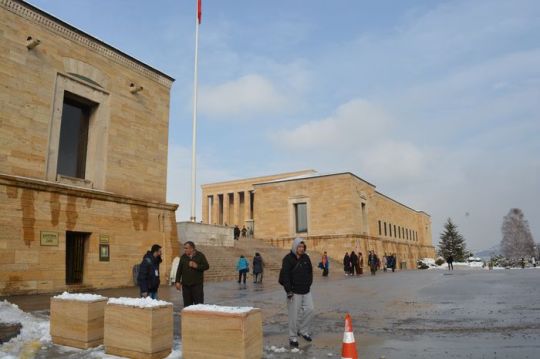
Bulgarian Arts
Through Centuries and Communist Rule
Ancient Treasures
The oldest Bulgarian art traces back to 12th-century mural paintings in Bachkovo Monastery. Between the 12th and 14th centuries, small cross-shaped churches with domes emerged. While Byzantine and Oriental influences shaped early art, western European influence gained prominence, especially in the painting center of Tirnovo. Contemporary artists like Anton Mitov, Ivan Angelov, Andrei Nikolov, and Ivan Lazarov continue the rich artistic tradition.
The Stage and Melodies
The National Opera (1890) and National Theater (1907) contributed to Bulgaria’s theatrical and musical heritage. Renowned singers such as Luba Velich, Boris Christov, and Elena Nikolai achieved global acclaim. Notable composers like A. Bukureshtliev, Dobri Christov, Pancho Vladigerov, and Petko Stainov enriched the musical landscape Private Istanbul Tour.
Cultural Landscape Under Communism
Communist influence since 1947 significantly impacted Bulgarian literature and art. The Communist Party’s control extended to all cultural and educational entities, enforcing adherence to party dictates. Literary classics contrary to Communist policies were banned, and censorship stifled creativity.
Resistance emerged, notably from non-Communist writer Trifon Kunev, who faced imprisonment and death in 1954. Communist Party member and painter Alexander Zhendov protested censorship in 1950, leading to his tragic suicide in 1951. Further dissent unfolded after the Soviet Communist Party’s 20th Congress in 1957, challenging the “cult of personality.” Playwright Todor Guenov’s “Fear” stood out, joined by other dissenting voices like Pavel Vezhinov, Orlin Vasilev, Emil Manov, Liudmil Stoyanov, and critic Boris Delchev.
Despite resistance, Bulgarian culture under Communist rule became a satellite of Soviet ideology, losing its originality. Subject to Party dogma, it served Soviet imperialistic and ideological goals, leaving an indelible mark on the nation’s cultural identity.
0 notes
Photo
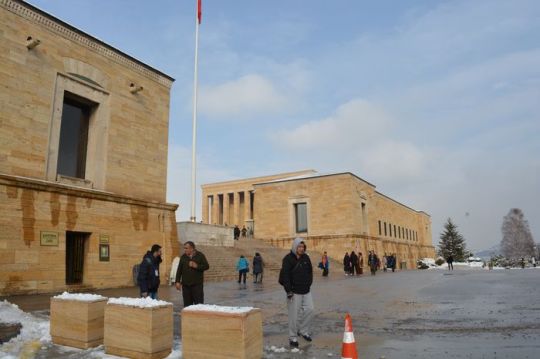
Bulgarian Arts
Through Centuries and Communist Rule
Ancient Treasures
The oldest Bulgarian art traces back to 12th-century mural paintings in Bachkovo Monastery. Between the 12th and 14th centuries, small cross-shaped churches with domes emerged. While Byzantine and Oriental influences shaped early art, western European influence gained prominence, especially in the painting center of Tirnovo. Contemporary artists like Anton Mitov, Ivan Angelov, Andrei Nikolov, and Ivan Lazarov continue the rich artistic tradition.
The Stage and Melodies
The National Opera (1890) and National Theater (1907) contributed to Bulgaria’s theatrical and musical heritage. Renowned singers such as Luba Velich, Boris Christov, and Elena Nikolai achieved global acclaim. Notable composers like A. Bukureshtliev, Dobri Christov, Pancho Vladigerov, and Petko Stainov enriched the musical landscape Private Istanbul Tour.
Cultural Landscape Under Communism
Communist influence since 1947 significantly impacted Bulgarian literature and art. The Communist Party’s control extended to all cultural and educational entities, enforcing adherence to party dictates. Literary classics contrary to Communist policies were banned, and censorship stifled creativity.
Resistance emerged, notably from non-Communist writer Trifon Kunev, who faced imprisonment and death in 1954. Communist Party member and painter Alexander Zhendov protested censorship in 1950, leading to his tragic suicide in 1951. Further dissent unfolded after the Soviet Communist Party’s 20th Congress in 1957, challenging the “cult of personality.” Playwright Todor Guenov’s “Fear” stood out, joined by other dissenting voices like Pavel Vezhinov, Orlin Vasilev, Emil Manov, Liudmil Stoyanov, and critic Boris Delchev.
Despite resistance, Bulgarian culture under Communist rule became a satellite of Soviet ideology, losing its originality. Subject to Party dogma, it served Soviet imperialistic and ideological goals, leaving an indelible mark on the nation’s cultural identity.
0 notes